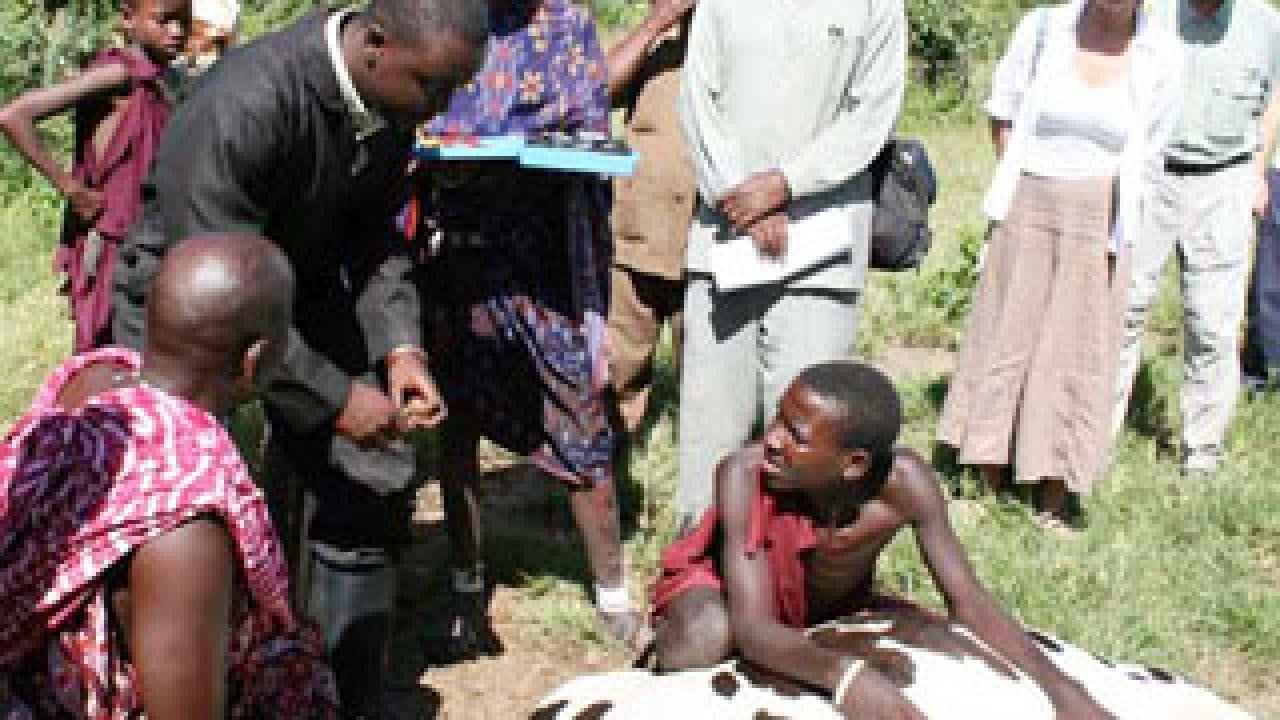Groundbreaking efforts by PREDICT, a project led by the One Health Institute at the University of California, Davis, are highlighted today in the medical journal The Lancet as a model for a new, globally coordinated pandemic prevention strategy.
PREDICT is part of the U.S. Agency for International Development’s Emerging Pandemic Threats Program, which builds on the understanding that humans, wildlife and the environment are inextricably linked.
“Our UC Davis-led team is using state-of the-art tools to discover and characterize new viruses around the world with the aim of identifying emerging threats and stopping them early, so that pandemics like HIV/AIDS and SARS are averted,” said Jonna Mazet, paper co-author and PREDICT director. Mazet is the executive director of the One Health Institute within the School of Veterinary Medicine.
The report is the third in a three-part series of papers published in The Lancet about zoonoses — emerging diseases that move between animals and people. More than 60 percent of the roughly 400 emerging infectious diseases that have been identified since 1940 are zoonotic. Most pandemics, such as HIV/AIDS, severe acute respiratory syndrome (SARS) or pandemic influenza, originate in animals and emerge where dense populations of humans and animals interact.
“What this series shows is that we have new ways to predict the origins of emerging infectious diseases, and discover them even before they reach our population — truly a brave new world for pandemic prevention,” said PREDICT partner and EcoHealth Alliance president Peter Daszak, a guest editor for the special series.
Other partners under the PREDICT project include Metabiota Inc., Smithsonian Institution and Wildlife Conservation Society.
Lead authors from the article will speak at the Institute of Medicine’s Forum on Microbial Threats, Dec. 11-12 in Washington, D.C.
The report reviews previous research about human pandemics and discusses the challenges to control them. It also explores new efforts to predict pandemics, target surveillance efforts for them and identify ways to prevent them.
PREDICT brings together experts in veterinary medicine, epidemiology, wildlife ecology, virology, genetics and other specialties to create a global early warning system for emerging diseases that move between wildlife and people.
PREDICT is active in 20 countries that are emerging infectious disease hot spots. The program uses a combination of risk modeling, computerized data collection and wildlife field sampling to identify the wildlife hosts, human-animal interfaces, and landscapes most likely to spur the next pandemic.
"PREDICT's work is integral to the School of Veterinary Medicine's mission to advance the health of animals, people and the environment," said Michael Lairmore, dean of the school. "This approach is the future of global public health and could help prevent pandemics at the source before they spread to human beings."
Among the paper’s key messages:
- Research in the field has shown that most recent pandemics have been caused by zoonotic viral pathogens that originated in wildlife.
- Such diseases are usually driven to emerge by ecological, behavioral or socioeconomic changes, such as the expansion of agriculture, travel routes and trade, and changes in land use.
- Technological advances are enabling targeted global surveillance of emerging infections.
- New risk-assessment approaches show promise to predict and pre-empt potential pandemics at their source and need to be further developed.
“No emerging infection has ever been predicted before it appeared in humans,” said lead author and PREDICT partner Stephen Morse, a visiting professor in UC Davis’ veterinary school and professor of epidemiology at Columbia University’s Mailman School of Public Health. “With new technologies, for the first time in history, we are now poised to predict and prevent emerging infections at the source, before they reach us.”
About the UC Davis School of Veterinary Medicine
As a top veterinary school internationally, and a leader in preventive medicine and wildlife health, UC Davis has an extensive research and training record in the fields of epidemiology, surveillance, zoonotic diseases, comparative medicine, diagnostics, wildlife pathogens and conservation, food safety, disease prevention and outbreak response. The school has trained more than 800 international veterinarians from 75 countries, including hot spots in Africa, Latin America and Asia. Its One Health Institute and Wildlife Health Center manage One Health programs for people and animals ranging from the Pacific Northwest to Africa’s Congo Basin and Rift Valley.
Media Resources
Kat Kerlin, Research news (emphasis on environmental sciences), 530-750-9195, kekerlin@ucdavis.edu
